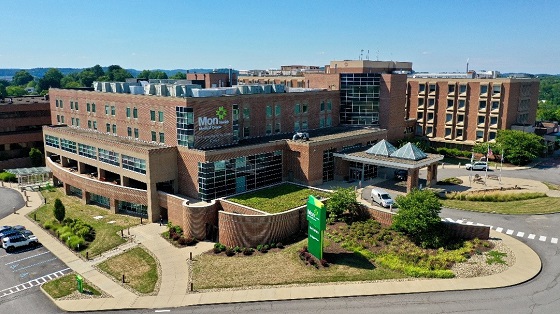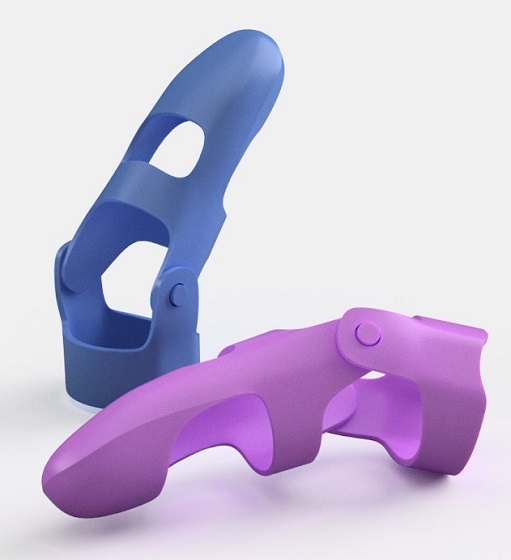Congratulations!
Mon Health System, an independent community health system located in North Central West Virginia, has been selected as the winner of ECRI's 15th Health Devices Achievement Award for its proactive approach to innovation. The organization partnered with a local innovation lab—forming Intermed Labs at Mon Health—to provide a pathway for its staff and clinicians to pursue technological innovations that have the potential to improve patient care.
The Health Devices Achievement Award recognizes outstanding initiatives undertaken by member healthcare institutions to improve patient safety, reduce costs, or otherwise facilitate better strategic management of health technology. ECRI
announced Mon Health System as the winner of the 15th award in June 2021.
ECRI congratulates David Goldberg, CEO of Mon Health System, along with Tom McClellan, MD, and the rest of the team at Intermed Labs at Mon Health, notably Justin Chambers, PhD, Ashok Aggarwal, and Drew Lytton.
 Mon Health Medical Center. (Image courtesy of Mon Health System.)
Mon Health Medical Center. (Image courtesy of Mon Health System.) |
The Challenge
To establish a pathway for innovation that helps physicians, clinicians, engineers, and others advance novel solutions that can improve patient care, that can benefit the local community in West Virginia, and that can be produced in a financially viable and, ideally, profitable manner.
The Context
Mon Health System is a not-for-profit, integrated network of hospitals, outpatient centers, and physician clinics in North Central West Virginia, Maryland, and Pennsylvania that works to make healthcare more accessible and affordable to the communities it serves. The system provides advanced care in a region that is distant from major urban academic centers and that is populated with diverse communities, including remote and economically disadvantaged ones.
The region was viewed as fertile ground for innovation by David Goldberg, the CEO of Mon Health System, and by Dr. Tom McClellan, a plastic surgeon affiliated with Mon Health and also the founder of
Intermed Labs, a West Virginia innovation lab and startup studio. The pair were the driving forces behind formalizing a relationship between the health system and the lab. The arrangement connects individuals at Mon Health System who have ideas for improving patient outcomes with the expertise and resources needed to help them turn the ideas into real-world solutions.
For Goldberg, "the idea was a no-brainer." He saw it as a way to advance patient care, unlock the potential of local talent (and perhaps attract and retain talent), and bring pride and economic benefit to the region. "Mon Health has high-caliber clinicians under its roof. This arrangement gives them the opportunity to take an idea they have, take it into the incubator studio, and kick the tires on it using a proven platform. They participate in the process of trying to turn the idea into something that improves care, or improves the outcome, and maybe becomes a solution that reaches beyond West Virginia's borders."
For McClellan, the benefit of the arrangement was more immediate, and more tangible. He has experience as a physician treating patients, as an inventor, and as an entrepreneur. All those roles came into play when he was treating a Mon Health patient who had suffered a fingertip amputation. The patient lived in a remote area and could not easily (or affordably) travel to locations where a traditional prosthetic could be fitted. McClellan had the idea to involve the patient in the process of designing a custom-fitted prosthetic finger augmentation that could be 3D printed. The patient worked with the team at Intermed Labs, and the group was able to develop a solution, detailed below, that exceeded the patient's expectations.
The shared vision of seeing innovation as a way to improve patient care and benefit their region—and the shared belief that the goal was attainable for a small health system—led to the establishment of Intermed Labs at Mon Health.
The Process
Intermed Labs at Mon Health comprises physicians, engineers, and designers whose sole purpose, according to McClellan, is to advance the translation of new ideas generated within the health system from the bench to the clinic. It exists as a partnership between the lab and the health system.
Goldberg formalized the partnership after seeing Intermed's process for building out ideas and after learning about the projects in the lab's pipeline. Mon Health System agreed to provide Intermed Labs with space that it had available on campus, to commit half a million dollars over two years, and to become a minor partner that would "stay out of the way," as Goldberg describes it. He considers it essential to let the doctors, clinicians, engineers, and students do the work of innovation without undue interference.
Through this partnership, individuals at Mon Health who have an idea for improving patient outcomes now have a place they can go to tinker with the idea. The arrangement gives them access to lab space, specialized equipment, and a team of individuals with relevant expertise to guide them in trying to take the idea to the next level.
The Results
An example of how an innovation lab with health system support can serve the unique needs of the local patient population can be seen in a single finger—or finger augmentation, to be exact.
Many of Mon Health System's patients work the kinds of manual labor jobs that are associated with distal finger amputation—the loss of a fingertip. Distal fingertip amputation occurs more frequently than complete finger amputation and often in young and productive populations;[1] and the loss of one or more fingertips can create drastic functional deficits, along with the loss of sensation. As a plastic/reconstructive surgeon in West Virginia, McClellan saw the opportunity to address a need in the region.
McClellan explains that current options for functional finger prostheses can be cost-prohibitive; the prostheses are often created in isolated specialized centers, and they generally require additional refinement after fabrication. For economically disadvantaged patients or those living in remote regions—or for pediatric patients, who are still growing—the cost, time, and travel factors can be significant obstacles. He knew that an affordable, high-quality, and easily obtained finger augmentation solution could be particularly impactful. A device developed using 3D printing technology proved to be just that.
The doctor worked with the engineers, designers, and programmers at Intermed Labs to design a 3D-printed finger augmentation that:
- Would restore an adequate level of function to the patient
- Could be sized and ordered from the patient's home (e.g., using a smartphone)
- Would require no postproduction refinement, and thus could be shipped directly to the patient's home
- Could be sold for about $50
The result of the collaboration involving the physician, the patient, and the designers and engineers at the lab met those specifications, and is now a marketable product: Fingy 3D (see photo). McClellan notes that the finger augmentation is designed for patients with amputation at the distal interphalangeal (DIP) joint. The design uses a single, flexible joint that consists of two pins molded directly into the medial and lateral aspects of the prosthesis immediately after 3D printing. High-grade nylon material is used during the fabrication process to achieve low cost while maintaining comfort and durability.
|
 Examples of Fingy 3D, the 3D-printed finger augmentation produced through the collaboration between Mon Health System and Intermed Labs. (Image courtesy of Intermed Labs.)
Examples of Fingy 3D, the 3D-printed finger augmentation produced through the collaboration between Mon Health System and Intermed Labs. (Image courtesy of Intermed Labs.) |
From the patient's perspective, the sizing and ordering process can be completed entirely from home. As McClellan explains: Patients simply use their phone to take a picture of their hand resting on an 8½ × 11-inch sheet of paper (for scale), and upload the image through a web app. Custom-designed scanning software obtains the measurements needed, which are then fed into a proprietary digital sizing model. Computer-aided design (CAD) software is used to adjust the devices for specific fitting points. Once the custom design is prepared, it is sent to a 3D printing service that fulfills the order and ships the finished product directly to the patient in a matter of days. The beta version is currently available at
www.Fingy3D.com.
With the resulting product, McClellan reports that patients experience significant return of function with quality range of motion and improved anatomical grasping of objects. He adds that additional materials, user interface improvements, and new designs to address more proximal amputations are in the works.
Key Takeaways
The partnership between Mon Health System and Intermed Labs illustrates how health systems can foster healthcare provider innovations at a local level. Goldberg notes two particular keys to success:
- The discipline for Mon Health "to stay out of the way" once the partnership was established. He explains the temptation for all health systems to get too involved, but cautions that doing so only stymies creation. He's a member of the Intermed board and stays engaged, but he's a firm believer that the innovators need to be given the freedom to innovate.
- Everybody who comes to the table owns a piece of their idea. Rather than turning over their intellectual capital to another party, clinicians who have an idea remain intimately involved in the process. They go into the lab and work with the group there to improve the idea and try to bring it to fruition.
Specifically with respect to the 3D-printed finger augmentation, the designers note the following:
- The use of high-grade nylon for the device confers stability and durability at a fraction of the cost of previously used materials.
- The device's intrinsic joint system makes it essentially maintenance-free and able to be used immediately upon delivery. Other 3D-printed augmentations can require significant postproduction customization and maintenance.
- The device offers particular utility for the pediatric population. The customizable design and cost-effective production allow for several devices to be used throughout a child's development.
Both Goldberg and McClellan stress—and their experience illustrates—that you don't need to be at a large academic medical center or in a major urban market to take a leadership position in innovation. The group has several projects in the pipeline and hopes to make an impact in its region and beyond.
_____________________________________
[1] Østlie K, Skjeldal OH, Garfelt B, et al. Adult acquired major upper limb amputation in Norway: prevalence, demographic features and amputation specific features. A population-based survey. Disabil Rehabil 2011;33(17-18):1636-49.